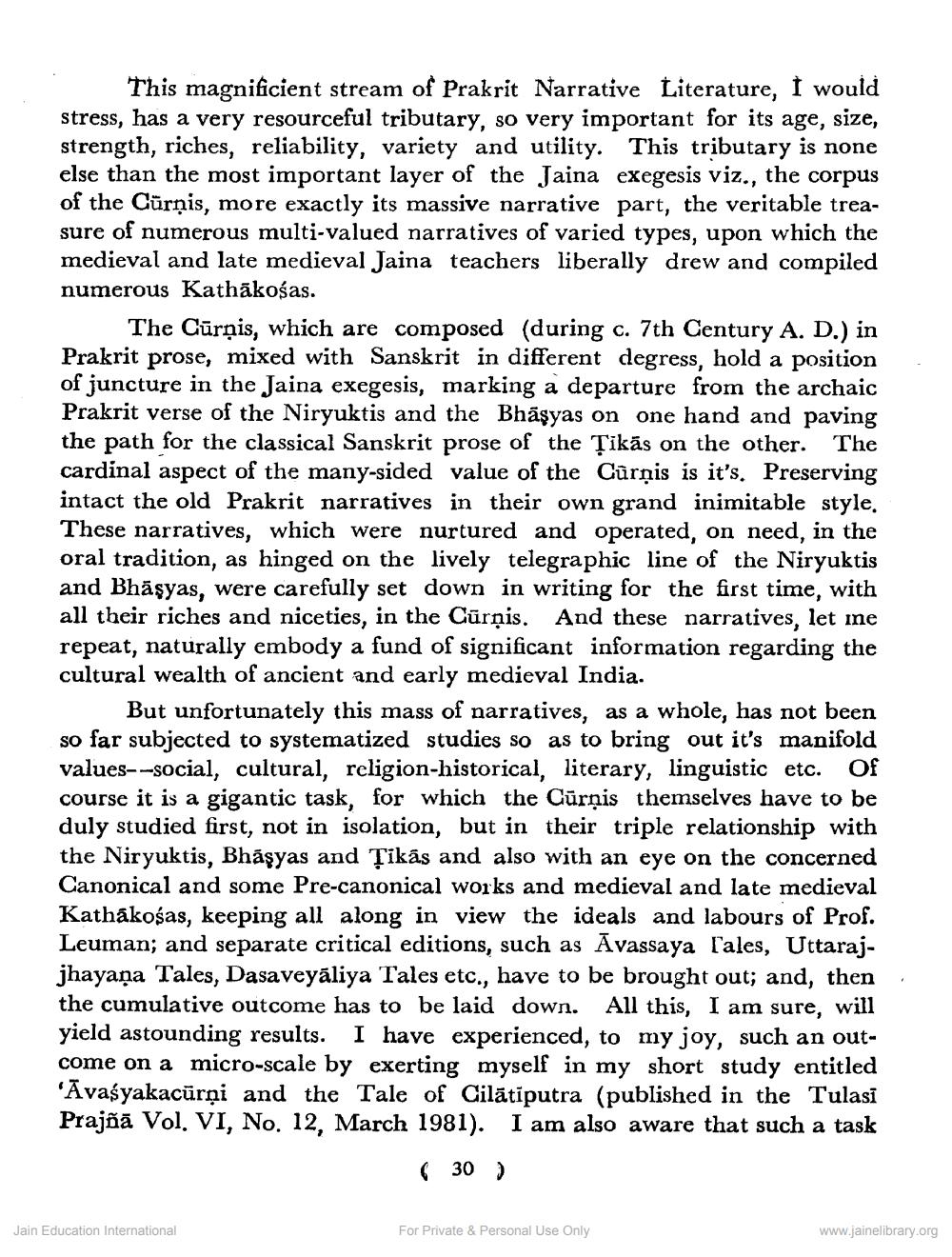________________
This magnificient stream of Prakrit Narrative Literature, I would stress, has a very resourceful tributary, so very important for its age, size, strength, riches, reliability, variety and utility. This tributary is none else than the most important layer of the Jaina exegesis viz., the corpus of the Cürnis, more exactly its massive narrative part, the veritabl sure of numerous multi-valued narratives of varied types, upon which the medieval and late medieval Jaina teachers liberally drew and compiled numerous Kathākośas.
The Cūrņis, which are composed (during c. 7th Century A. D.) in Prakrit prose, mixed with Sanskrit in different degress ho of juncture in the Jaina exegesis, marking a departure from the archaic Prakrit verse of the Niryuktis and the Bhāşyas on one hand and paving the path for the classical Sanskrit prose of the Țikās on the other. The cardinal aspect of the many-sided value of the Cûrņis is it's. Preserving intact the old Prakrit narratives in their own grand inimitable style, These narratives, which were nurtured and operated, on need, in the oral tradition, as hinged on the lively telegraphic line of the Niryuktis and Bhāşyas, were carefully set down in writing for the first time, with all their riches and niceties, in the Cūrņis. And these narratives, let ine
beat, naturally embody a fund of significant information regarding the cultural wealth of ancient and early medieval India.
But unfortunately this mass of narratives, as a whole, has not been so far subjected to systematized studies so as to bring out it's manifold values--social, cultural, religion-historical, literary, linguistic etc. course it is a gigantic task, for which the Cūrņis themselves have to be duly studied first, not in isolation, but in their triple relationship with the Niryuktis, Bháşyas and Tikâs and also with an eye on the concerned Canonical and some Pre-canonical works and medieval and late medieval Kathakośas, keeping all along in view the ideals and labours of Prof. Leuman; and separate critical editions, such as Avassaya sales, Uttarajjhayaņa Tales, Dasaveyāliya Tales etc., have to be brought out; and, then, the cumulative outcome has to be laid down. All this, I am sure, will yield astounding results. I have experienced, to my joy, such an outcome on a micro-scale by exerting myself in my short study entitled 'Avaśyakacürņi and the Tale of Cilātīputra (published in the Tulasi Prajñā Vol. VI, No. 12, March 1981). I am also aware that such a task
(30 )
Jain Education International
For Private & Personal Use Only
www.jainelibrary.org




